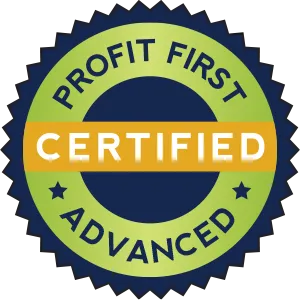Are These Hidden Financial Leaks Draining Your Business?
Deb's Pain Points at a Glance
Money Silently Slipping Away
Unnecessary expenses quietly drain your accounts each month, even when you think you're on top of your finances. Just like I discovered £750 monthly leaks in my own bookkeeping business!
The 'Too Busy' Trap"
You're so focused on getting new clients and growing revenue that you overlook the simpler wins hiding in your current expenses. It's like chasing new income while letting existing profit escape.
The Subscription Spiral
Forgotten memberships, unused tools, and overlapping services pile up month after month. Before you know it, you're paying for solutions you haven't used in months.
False Sense of Financial Security
Even as a financial expert, I thought I had complete control of my expenses. That false confidence could be costing your business thousands each year.
Working Harder, Not Smarter
You're putting in extra hours to win new clients, when the equivalent profit could be sitting right there in your expense sheet. I found £9,000 - the same as gaining a medium-sized client!

Hidden in Plain Sight:
How I Found £9,000 of Pure Profit in Just One Afternoon
The first time I did this expense-stripping exercise, I’ll admit, I didn’t expect it to make a huge difference. I thought I had a pretty good handle on where my money was going—after all, I’m a bookkeeper! But I decided to challenge myself and really dig into the details. What I discovered surprised me.
After just a few hours of reviewing my expenses with a critical eye, I managed to strip out £750 a month in unnecessary costs. At first glance, that might not sound like much, especially when compared to revenue figures. But then I did the maths: £750 a month adds up to £9,000 a year. That’s £9,000 back in my pocket, minus tax, of course!
To put it into perspective, £9,000 a year was the equivalent of gaining one medium-sized client or two small clients. When I thought about the effort and resources that go into acquiring, onboarding, training, and serving a new client, it really hit home how valuable this exercise was. All of that time and energy saved—just by taking a couple of hours to get clear on my spending.
The Process I Followed:
I audited my subscriptions:
I looked at every recurring payment. There were tools I hadn’t logged into for months, subscriptions I’d forgotten about, and memberships that weren’t delivering value. Cancelling these was an instant win.
I questioned every expense:
For each item, I asked:
Is this essential to my business operations?
Could I achieve the same outcome more cost-effectively?
Am I keeping this out of habit rather than necessity?
Some decisions were easy—unused software or duplicate services. Others required a mindset shift, like downgrading a premium tool that wasn’t being fully utilised.
I reframed spending decisions:
I started seeing my expenses as investments and asked whether each one was giving me a measurable return. If it wasn’t, it had to go.

The Results
What surprised me most was how quickly the savings added up. Many of the expenses I cut were small—£10 here, £20 there—but they added up to £750 a month. That’s money that now works for me and my business, rather than being wasted on things that weren’t moving the needle.
This exercise not only improved my bottom line but also changed how I approached financial decisions. I became more intentional, asking whether every pound spent was delivering real value. It’s not just about cutting costs; it’s about making space for profitability and growth.
Takeaway: Stripping down expenses may not sound glamorous, but it’s one of the simplest, most effective ways to reclaim your profit and refocus your business on what really matters.

The Lesson
Sometimes we focus so much on bringing in more clients or generating more revenue that we overlook the simpler wins. Cutting unnecessary expenses doesn’t just save money; it creates breathing room. It reduces stress, increases profit margins, and frees up resources for the things that truly matter.
If you’ve never done this exercise, I can’t recommend it enough. A couple of hours spent scrutinising your expenses could deliver results that rival landing a new client—without the effort of onboarding! For me, it was a game-changer, and it’s now something I do regularly to keep my finances lean and focused.
The Profit First System
We introduced Peter to the Profit First methodology, which helped him organise his income, prioritise profitability,set sales targets and ensure he was always prepared for taxes. Peter also began providing for his future in a pension - utilising the tax efficient benefits available in his company. For the first time, Peter could see exactly where his money was going, how much he had to reinvest in his business, and most importantly, what his actual profits were.


See How Deb Transformed Her Business – You Can Too!
Deb’s journey from financial confusion to business growth wasn’t a fluke—it was the result of implementing the same Profit First strategies and financial mastery taught in the Confusion to Confidence Framework.
Just like Deb, you can:
Gain clarity over your finances.
Implement cash flow management systems that drive profitability.
Guide your clients to make confident decisions that grow their businesses.
Ready to Lead Your Clients to Financial Success?
Don’t wait until you or your clients hit a wall.
Sign up to our waitlist and get instant access to the
"Profit First One Sheet: A Step-by-Step PDF Guide."
